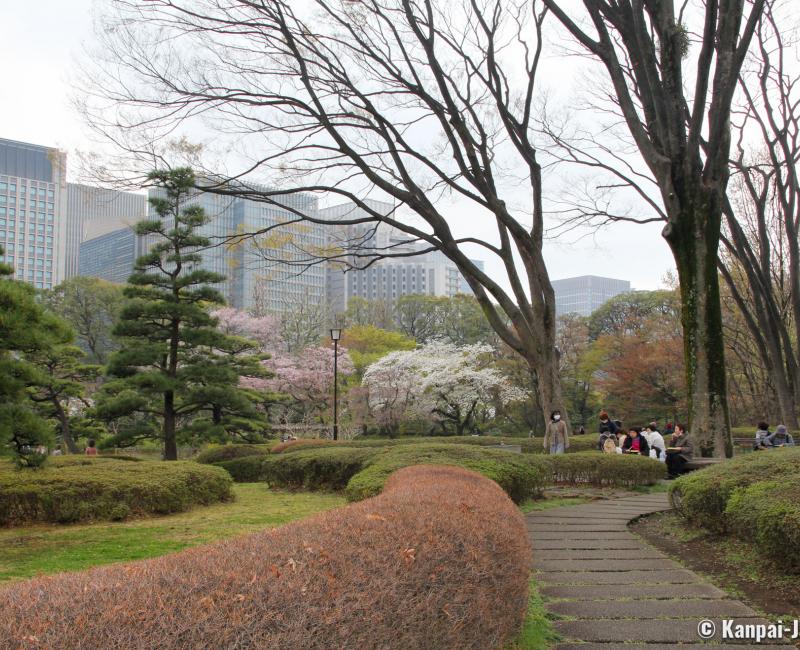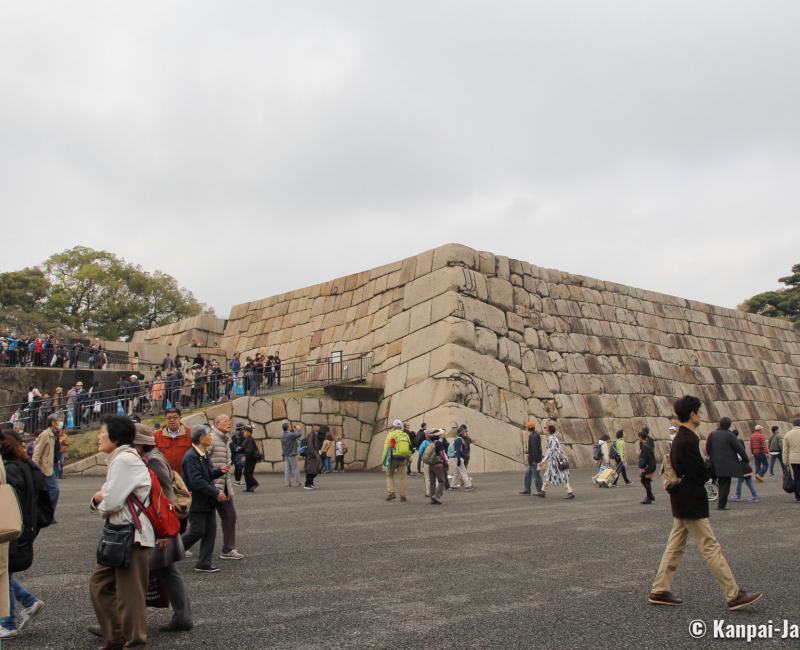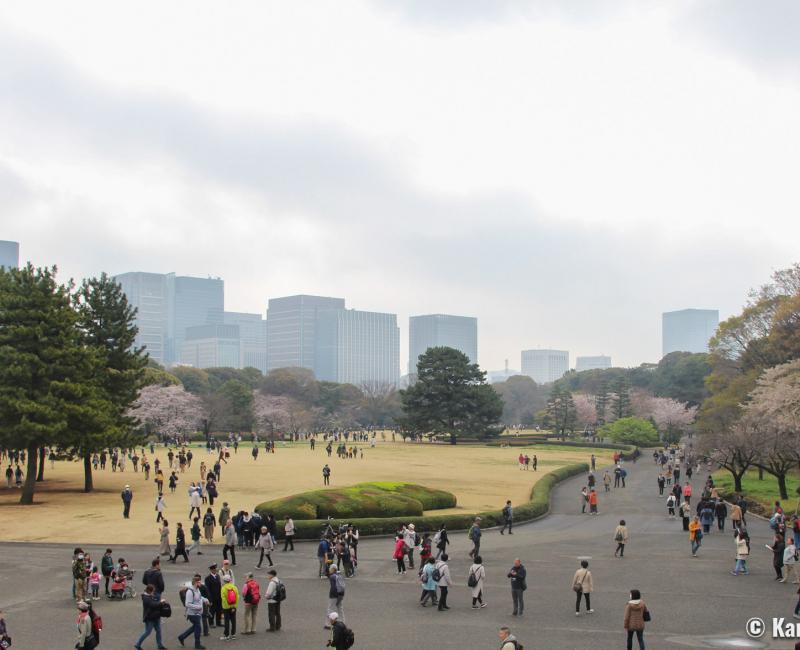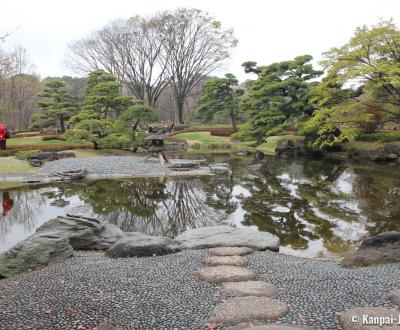Kokyo Higashi Gyoen
The East Gardens of Tokyo Imperial Palace
Tokyo Imperial Palace’s East Gardens, or Kokyo Higashi Gyoen, are located in the heart of the capital of Japan, next to the Emperor’s residency. These gardens are one of the city’s iconic touristic places, sheltering the ruins of Edo Castle in a well-maintained park providing a quiet and pleasant walk in the heart of the megalopolis.
The Imperial Palace’s gardens Kokyo Higashi Gyoen are among the three largest parks in Tokyo. The site was occupied by Edo Castle 🏯 during the eponymous period (1603 - 1868) and was the residence of the then reigning Tokugawa shoguns’ family. In 1868, after the imperial power’s restoration, Emperor Meiji had his palace build in the vicinity. Nowadays, the gardens on the eastern side are opened to the public, while those on the western side are enclosed in the Emperor’s estate and thus not viewable.
A place dedicated to the majesty of the imperial power
Despite their location in the heart of Tokyo, the gardens, still limited by the ancient moats, offer a sacred space with few modern constructions. They are hidden behind wide and impressive fortification walls.
On the north of the wide plaza before the palace, a little bridge opens on Ote-mon gate and signals the entrance of the gardens. After crossing the moat, visitors are welcomed by beautiful wooden buildings, such as the park’s guardhouses and the former Imperial Guard Headquarters. An indescribable feeling dwells while standing in the Imperial Palace grounds and such a vast open space in the heart of the capital.

The traditional Japanese garden Ninomaru
The north-eastern part of the garden is the most traditional. A teahouse has been reconstructed, which is unfortunately not opened to the visit. However, anyone can enjoy the nearby wooden area where several benches create the ideal place for a quiet picnic.
It is also where visitors will find the most beautiful part of the site: the Japanese garden Ninomaru. Initially designed by master of tea ceremony Kobori Enshu in 1630, it was destroyed by a fire 🔥 at the end of Edo period. The present-days’ garden was rebuilt in 1968 following the original design. It is arranged around a pond, on which an inlet is decorated with an elegant stone lantern 🏮 and several small bridges. It is certainly not the most beautiful traditional Japanese garden in Tokyo, but it offers a pleasant, relaxing atmosphere at the foot of Marunouchi’s buildings.
Edo Castle’s ruins
In the westernmost part, a large esplanade is home to Fujimi-yagura turret, unfortunately not opened to the visit. It was a vantage point from which Mount Fuji 🗻 was viewable before the tall buildings surrounding the palace were built. A small defense tower is opened to the public, with a view on Inui-dori alley, on the other side of the moats in the usually forbidden part of the palace.
These constructions are the remnants of Tokugawa shoguns’ Edo Castle main enclosure. The main keep, Tenshu-dai, was destroyed by a fire as soon as 1657 and was never rebuilt. It is however of historical significance and only its massive stone foundations remain. They are used as a platform that offers a nice observation spot on the park and the skyscrapers of Tokyo station area. Moreover, nothing remains from the shoguns’ residency, named Honmaru and destroyed in 1873.

From summer 2019 to the end of winter 2020, the area between Tenshu-dai and Honmaru temporarily accommodated Daijokyu, a group of traditional pavilions. They were used for the celebration of Daijosai, a ceremony part of the enthronement protocol performed by the Emperor of Japan to ensure peace and prosperity for the Japanese people. The wooden buildings specially built for the occasion have been dismantled afterward and part of the materials have been incinerated in a Shinto ritual.
However, the major historical interest of the place doesn’t really show and it can be easy to overlook its cultural importance.
Nearby, the modern Tokagaku-do, built in 1966 for Shôwa emperor’s mother and used as a concert hall for the imperial family, contrasts with its octagonal shape and its mosaic decorations.

A green space enhanced by the sakura
The park displays several trees and bush species and is well-maintained, but the cherry trees 🌸 blooming season is certainly the best moment to visit Kokyo Higashi Gyoen. The flowers enlighten a place that is usually rather common-looking, especially on its western part. Shinjuku Gyoen Park offers more impressive views and an atmosphere that resembles Central Park’s in New York.
On the northern side of the garden, the gate Kita Hanebashi-mon, when opened, gives access to Kitanomaru Park and its Science Museum, National Museum of Modern Art and National Crafts Museum, and the Nippon Budokan. It is not a must-see if you are looking for the most beautiful Japanese gardens, but it is nevertheless a pleasant outdoor halt in spring.


